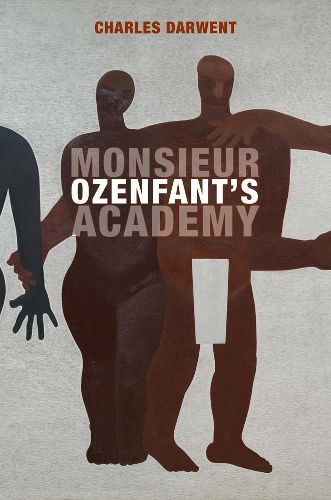Readings Newsletter
Become a Readings Member to make your shopping experience even easier.
Sign in or sign up for free!
You’re not far away from qualifying for FREE standard shipping within Australia
You’ve qualified for FREE standard shipping within Australia
The cart is loading…






Before the Second World War, an art school stood in a pair of mews houses off Kensington High Street in London. Although the school was small and short-lived, it would be linked to an extraordinary range of talent. Leonora Carrington was one of its students; Henry Moore taught there; Francis Bacon and Eduardo Paolozzi both cited its creator as the reason they had become artists. The school bore his name: the Amedee Ozenfant Academy of Fine Arts.
Ozenfant and his school are largely forgotten, yet in the 1920s the man who, with Le Corbusier, invented the style they called Purism, was as well known as Picasso. His academy was a solitary outpost of the Parisian avant-garde in London; Ozenfant was, said France's education minister, "the man who represented French art in Britain". As war drew nearer, this lent him an importance that was not just cultural but political. Charles Darwent's book quietly redraws the history of Anglo-French relations in the late 1930s.
Distributed for Art Publishing Inc.
$9.00 standard shipping within Australia
FREE standard shipping within Australia for orders over $100.00
Express & International shipping calculated at checkout
Before the Second World War, an art school stood in a pair of mews houses off Kensington High Street in London. Although the school was small and short-lived, it would be linked to an extraordinary range of talent. Leonora Carrington was one of its students; Henry Moore taught there; Francis Bacon and Eduardo Paolozzi both cited its creator as the reason they had become artists. The school bore his name: the Amedee Ozenfant Academy of Fine Arts.
Ozenfant and his school are largely forgotten, yet in the 1920s the man who, with Le Corbusier, invented the style they called Purism, was as well known as Picasso. His academy was a solitary outpost of the Parisian avant-garde in London; Ozenfant was, said France's education minister, "the man who represented French art in Britain". As war drew nearer, this lent him an importance that was not just cultural but political. Charles Darwent's book quietly redraws the history of Anglo-French relations in the late 1930s.
Distributed for Art Publishing Inc.